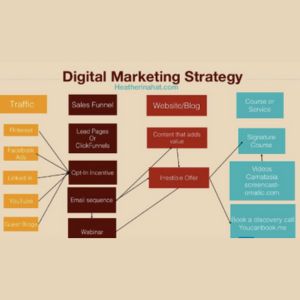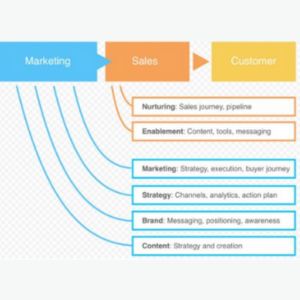Businesses may traverse the complex web of internet opportunities with accuracy and purpose by using a digital marketing strategy as their compass. Utilizing websites, search engines, social media platforms, email marketing, and content development is both an art and a science.
Therefore, it is more important to firmly identify with ideal people who behave magnificently and appropriately.It’s a comprehensive strategy that gets start outlining specific goals and objectives.
Whether it’s raising brand recognition, boosting website traffic, raising conversion rates, or cultivating client connections. Because it entails probing deeply into the target audience’s thoughts to uncover their objectives and pain issues. Its customized messaging speaks to their innermost aspirations.
Digital marketing strategy enables businesses to locate, entice, and convert their target customers, releasing the true potential of online platforms. By purposefully combining data-driven insights, creative narratives , and cutting-edge technology, brands advance.
Businesses can develop intriguing messages and fascinating content with the help of a well-designed digital marketing plan. Use the appropriate methods to create strong connections with your audience.
Key Components of Digital Marketing Strategy

A digital marketing strategy is made up of a number of important elements that work together to accomplish the intended goals. The following are the key components.
Clear Goals and Objectives: Establish concrete, quantifiable goals that are consistent with your overall business objectives as your first step.Increasing brand recognition, internet traffic, lead generation, and sales.
Target audience analysis: Gain a thorough grasp of the demographics, tastes, behaviors, and needs of your target audience analysis. So this makes it easier to customize your marketing efforts so they effectively reach and connect with the correct audiences.
Digital marketing techniques: Research and study the digital marketing techniques of your rivals to find out about their advantages, disadvantages and special selling points. You can do this to set yourself apart from the competition and discover business prospects.
Content Procedure: Encourage a plan for presenting your interest group with demands for substantial and vital content. This includes many content formats like blog entries, essays, videos, infographics, digital broadcasts, and posts on virtual amusement.
Website and Content: Streamline your website and content to increase natural perceivability and web crawler ranks. Because this is known as website improvement (Web optimization). Direct keyword research, efficient on-page elements, the creation of high-quality backlinks, and assurance of a user-friendly site analysis.
Examining and Estimating: Utilize monitoring and estimation tools to assess how your computerized advertising campaigns are presented. Measure important metrics including site traffic, conversions, commitment rates, and return on investment. Utilize information experiences to make well-informed decisions and improve your workflow.
What are Digital Marketing Tactics ?

The exact methods and procedures used as part of a digital marketing strategy to meet the set objectives are referred to as digital marketing tactics. So to engage the target audience and achieve the intended results, these strategies are put into practice across a range of digital channels and platforms.
Search engine optimization : (SEO) is the process of improving a website’s technical, structural, and content aspects in order to increase its visibility and organic search engine ranks.This includes keyword research, on-page optimization, link building, and mobile development.
Content advertising: Content advertising is the creation and distribution of significant and timely content. Such as blog posts, articles, videos, infographics, digital books, webcasts, and contextual studies. The objective is to develop thought leadership, generate organic traffic, and draw in and keep the target audience. All of them are a part of content marketing.
Affiliate marketing : Affiliate marketing is the practice of working with affiliates to market your goods or services in return for a cut of each sale . Bloggers, influencers, or website owners with target audiences are frequently considered affiliates.
Mobile marketing : Mobile marketing refers to the specific customization of marketing initiatives for mobile devices, such as website responsiveness optimization. Utilizing mobile apps for engagement and conversions and launching mobile ad campaigns.
Video marketing :Video marketing is the process of producing and disseminating videos to engage and inform viewers. Product demos are one type of video marketing strategy. For instance, explanatory videos, client endorsements, vlogs, webinars, and live streaming on websites like YouTube, TikTok, or Instagram.
Pay-per-Click (PPC): Pay-per-Click (PPC) advertising is when businesses run targeted adverts on search engines .On the other hand ad networks and are charged every time one of their ads is clicked.
How to Create a Digital Marketing Strategy ?

The broad strategy and tactics used by organizations or people are referred to as digital marketing strategies. To advertise their goods, services, or brand through numerous digital platforms and channels.
Describe your aims and objectives in detail: Start clearly defining what you hope to achieve with your sophisticated marketing initiatives.
Identify your interest group: Develop a thorough understanding of the socioeconomics, interests, behavioural patterns, and problem areas of your interest group. Create buyer personas that speak to your ideal customers to help your marketing and communication strategies shine.
Develop your content strategy: Plan on producing and disseminating vital and noteworthy content to attract, engage, and maintain your target audience. Choose the content types that resonate with your audience, such as blog posts, articles, recordings, infographics, digital broadcasts .
Paid advertising campaigns :Determine your budget and distribute it among different paid advertising channels as you plan and carry out paid advertising campaigns. Such as display ads, influencer partnerships, social media ads, or search engine ads. Establish your targeted criteria and produce eye-catching ad creatives.
Utilize social media platforms: Create a social media plan that is in line with your objectives and target market. Run paid advertising campaigns, engage with your audience, create and share compelling content, and use social listening to keep an eye on talks about your business.
Email campaigns: Create a list of email subscribers and create customized email campaigns to nurture leads and advertise products or services. It keeps track of email stats, automates workflows, and personalizes emails for each recipient.
Digital marketing plan: Regularly analyze and modify your digital marketing plan in light of data, customer feedback, and market developments. To get the best outcomes, try out various strategies, try out novel concepts, and adjust to shifting consumer behavior.

